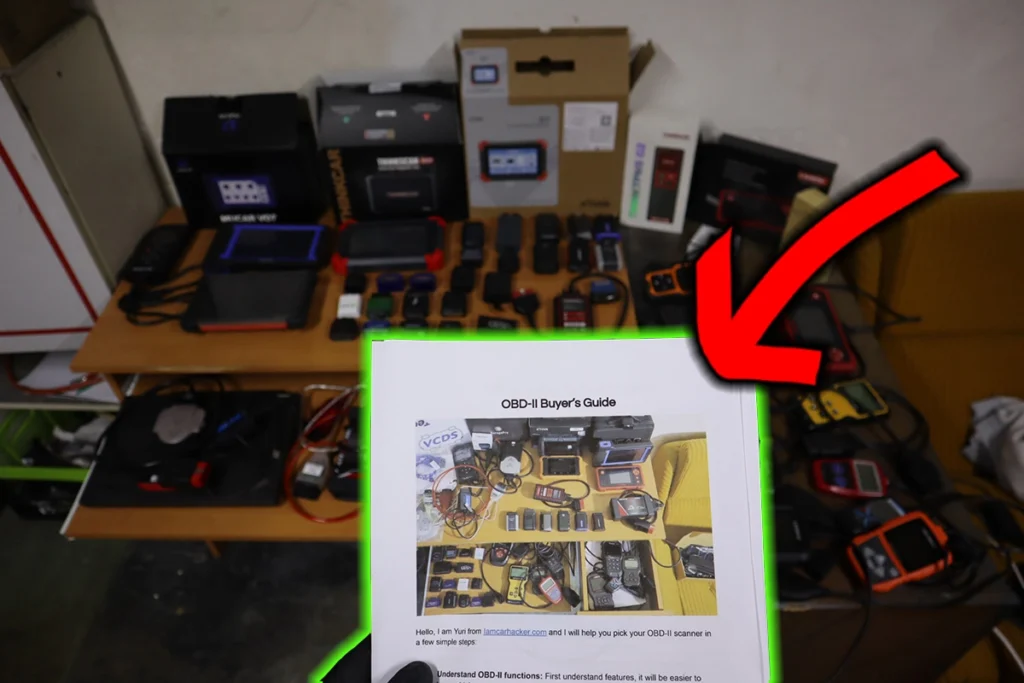The P2459: Diesel Particulate Filter Regeneration Frequency code indicates that the frequency of regeneration of the diesel particulate filter is too high. This filter is crucial for reducing emissions in diesel engines by trapping soot and other particulates. When the filter becomes saturated, it needs to regenerate or clean itself, usually by burning off the soot at high temperatures. This code suggests that regeneration is happening too often, pointing to potential issues with the filter or related systems.
P2459 quick overview
| Meaning | P2459: Diesel Particulate Filter Regeneration Frequency |
| Is it serious? | This code is serious as it indicates issues with the diesel particulate filter system, which can affect vehicle performance and emissions. |
| Possible causes | – Blocked or contaminated diesel particulate filter (DPF) – Faulty exhaust gas temperature sensors – Inadequate driving conditions for DPF regeneration (short trips) – Issues with fuel injectors leading to excessive soot production – Malfunctioning DPF pressure sensor or related circuitry – Software issues or the need for an ECU update – Air intake or exhaust system restrictions |
| How to diagnose? | Check DPF Condition: Physically inspect the DPF for blockages or damage. Evaluate EGT Sensors: Test exhaust gas temperature sensors for accuracy and function. Examine Driving Patterns: Consider if the vehicle’s usage is conducive to proper DPF regeneration. Inspect Fuel System: Check fuel injectors and overall system for issues causing excessive soot. Verify Software Updates: Ensure the vehicle’s ECU software is up to date. Test DPF Sensors: Assess the functionality of DPF pressure sensors and related wiring. Inspect Air Intake/Exhaust: Look for any restrictions in the air intake and exhaust systems. |
P2459 Meaning
This code means your vehicle’s system for cleaning its emissions filter is activating more often than normal. This filter helps reduce pollution from your diesel engine by catching tiny particles in the exhaust. If the cleaning (regeneration) happens too much, it could mean the filter is blocked, something’s wrong with the sensors, or the engine is producing too much soot. It’s important to fix this to keep your engine running well and not harm the environment. You might need to check the filter, sensors, and how you’re using your vehicle to find the cause.
Free PDF: How to choose OBD2 scanner

I’ve made you a free PDF to choose the OBD2 scanner in 5 minutes.
✅ Which OBD2 scanner is best?
✅ Which type should you get (DIY, Pro, Hobby)
✅ What is the best scanner for the exact brand/feature (e.g best for BMW)
✅ How to get a Bi-Directional tool for as cheap as $40
✅ Discount coupons for scanners
PDF is 100% free and it is designed to help you pick a scanner in less than a few minutes! Not a boring 50-page guide.
Just tell me where to send it.
How to fix P2459 – learn from mechanics
I looked into P2459 service cases at iatn.com website where in the private forums the mechanics seek advice from other mechanics. I looked up a bunch of cases to help you decide how to fix your issue and see what would a real mechanic do to solve it.
Case #1: Ram
Vehicle Information: 2013 Ram 5500 Tradesman 6.7L
Issue + Repair History:
- Vehicle had persistent codes P244a (DPF Differential Pressure Too Low) and P2459 (DPF Regeneration Too Frequent).
- DEF gauge on the dash always read full regardless of actual level.
Other OBD2 Codes + Test Results:
- P244a – Diesel Particulate Filter Differential Pressure Too Low
- P2459 – Diesel Particulate Filter Regeneration Too Frequent
Suggestions to Fix Issue:
- Check for carboned up EGR cooler.
- Inspect DPFE sensor tubing for coking and accurate reading.
- Consider PCM flash update and eliminating ammonia sensor.
- Check differential pressure sensor hoses for plugging or incorrect connection.
- Ensure no reversing of DPF sensor hoses.
- Consider failed differential pressure sensor.
- Clear sensor lines and verify with manometer.
Final Fix:
- Inlet sensing tube of the Diesel Particulate Filter had some soot buildup.
- Cleaned the buildup with wire and compressed air.
- Cleared codes and problem did not reoccur.
Case #2: Ford
Vehicle Information: 2016 Ford F750 6.7L
Issue + Repair History:
- Truck came in with P2459 (Particulate filter regeneration frequency).
- Constant regenerating of the DPF.
- DPF load percentage climbing back to 100% after about 15 miles.
- DPF cleaned and tested, found good.
- DPF pressure sensor replaced.
- PCM updated with the latest calibrations.
- No exhaust leaks, MAP sensor normal, intake clear, and air filter new.
Other OBD2 Codes + Test Results:
- P2459 – Particulate Filter Regeneration Frequency
- Back pressure sensor at idle: 3-4psi
- Back pressure at 2000 rpm: 13psi
- Exhaust temps on regen: 1100-1200°F
Suggestions to Fix Issue:
- Check if PCM calibration is current; consider TSB 17-2234 for PCM reflash.
- Inspect soot load sensor for malfunction.
- Evaluate potential RFI interference from added equipment.
- Look into EGT sensor 2 for proper operation.
Final Fix:
- DPF partially plugged, leading to constant regeneration.
- Replacement of DPF filter planned as it was not meeting vehicle’s testing standards.
Case #3: Dodge
Vehicle Information: 2015 Ram 2500 6.7L Diesel
Issue + Repair History:
- MIL on with code P2459 (DPF Regeneration Too Frequent).
- Vehicle experienced frequent DPF regenerations during normal driving.
- Prior repair attempts included cleaning the DPF and replacing related sensors.
Other OBD2 Codes + Test Results:
- No additional codes reported.
- DPF pressure readings were within normal range during diagnostics.
Suggestions to Fix Issue:
- Inspect for any software updates or TSBs related to the emission system.
- Check EGT sensors for proper functionality.
- Evaluate the fuel system for possible contamination affecting combustion.
Final Fix:
- Performed a software update as per a relevant TSB.
- Replaced a faulty EGT sensor that was inaccurately reporting temperatures.
Case #4: Ford
Vehicle Information: 2017 Ford F-350 Super Duty 6.7L Diesel
Issue + Repair History:
- Truck throwing P2459, indicating frequent DPF regenerations.
- Driver noticed decreased fuel efficiency.
- Previous attempts to resolve included replacing the DPF.
Other OBD2 Codes + Test Results:
- P246C – DPF Soot Accumulation
- Exhaust backpressure sensor readings showed higher than normal values.
Suggestions to Fix Issue:
- Verify the integrity of the exhaust backpressure sensor and its circuit.
- Conduct a manual regeneration to assess if the DPF is clearing properly.
- Inspect for any air intake restrictions affecting engine performance.
Final Fix:
- Discovered a faulty exhaust backpressure sensor leading to incorrect DPF loading readings.
- Sensor replaced and manual regeneration successfully cleared the DPF.
Case #5: Chevrolet
Vehicle Information: 2014 Chevrolet Silverado 3500 6.6L Diesel
Issue + Repair History:
- Code P2459 triggered, with frequent regeneration cycles.
- Vehicle had a history of heavy towing.
- Recent service included air filter replacement and fuel system check.
Other OBD2 Codes + Test Results:
- No other significant codes found.
- Sensor data confirmed frequent regeneration initiation.
Suggestions to Fix Issue:
- Check for any aftermarket modifications to the exhaust or engine tuning.
- Evaluate driving patterns and load conditions of the vehicle.
- Inspect the fuel injectors for proper operation.
Final Fix:
- Found that heavy towing and short trips contributed to excessive soot buildup.
- Advised the owner on driving patterns to reduce DPF loading.
- Performed injector cleaning service to improve combustion efficiency.
How to diagnose P2459
I made you an overview of solving this DTC, based on all the advice that was suggested by certified mechanics to address this issue in previously mentioned service cases.
| Advice | Brief Description of Diagnostic Step |
|---|---|
| Check for Software Updates | Verify if there are any available software updates or Technical Service Bulletins (TSBs) related to the emission system or DPF regeneration. |
| Inspect EGT Sensors | Evaluate Exhaust Gas Temperature (EGT) sensors for proper functionality and accurate temperature reporting. |
| Manual DPF Regeneration | Perform a manual regeneration to assess if the Diesel Particulate Filter (DPF) is clearing properly and to check for proper operation. |
| Examine Exhaust Backpressure Sensor | Verify the integrity and functionality of the exhaust backpressure sensor and its circuit, as incorrect readings can affect DPF regeneration cycles. |
| Assess Fuel System | Check the fuel system for possible contamination or issues that could affect combustion and lead to frequent DPF regeneration. |
| Inspect for Air Intake Restrictions | Check the air intake system for any restrictions or issues that might be affecting engine performance and contributing to DPF soot accumulation. |
| Evaluate Driving Patterns | Consider the vehicle’s driving patterns and load conditions, as frequent short trips or heavy towing can lead to excessive soot buildup in the DPF. |
| Check Fuel Injectors | Inspect the fuel injectors for proper operation, as malfunctioning injectors can contribute to incomplete combustion and increased soot production. |
| Consider Aftermarket Modifications | Review any aftermarket modifications to the exhaust or engine tuning, as these can impact the DPF regeneration process. |
Free PDF: How to choose OBD2 scanner

I’ve made you a free PDF to choose the OBD2 scanner in 5 minutes.
✅ Which OBD2 scanner is best?
✅ Which type should you get (DIY, Pro, Hobby)
✅ What is the best scanner for the exact brand/feature (e.g best for BMW)
✅ How to get a Bi-Directional tool for as cheap as $40
✅ Discount coupons for scanners
PDF is 100% free and it is designed to help you pick a scanner in less than a few minutes! Not a boring 50-page guide.
Just tell me where to send it.

Hi, I am Juraj “Yuri” Lukacko. I got frustrated by unhelpful and scammy mechanics, so I decided to learn everything about car diagnostics myself. I test dozens of new car diagnostic tools every month along with learning new strategies to fix and customize cars. About Juraj Lukacko (Yuri)